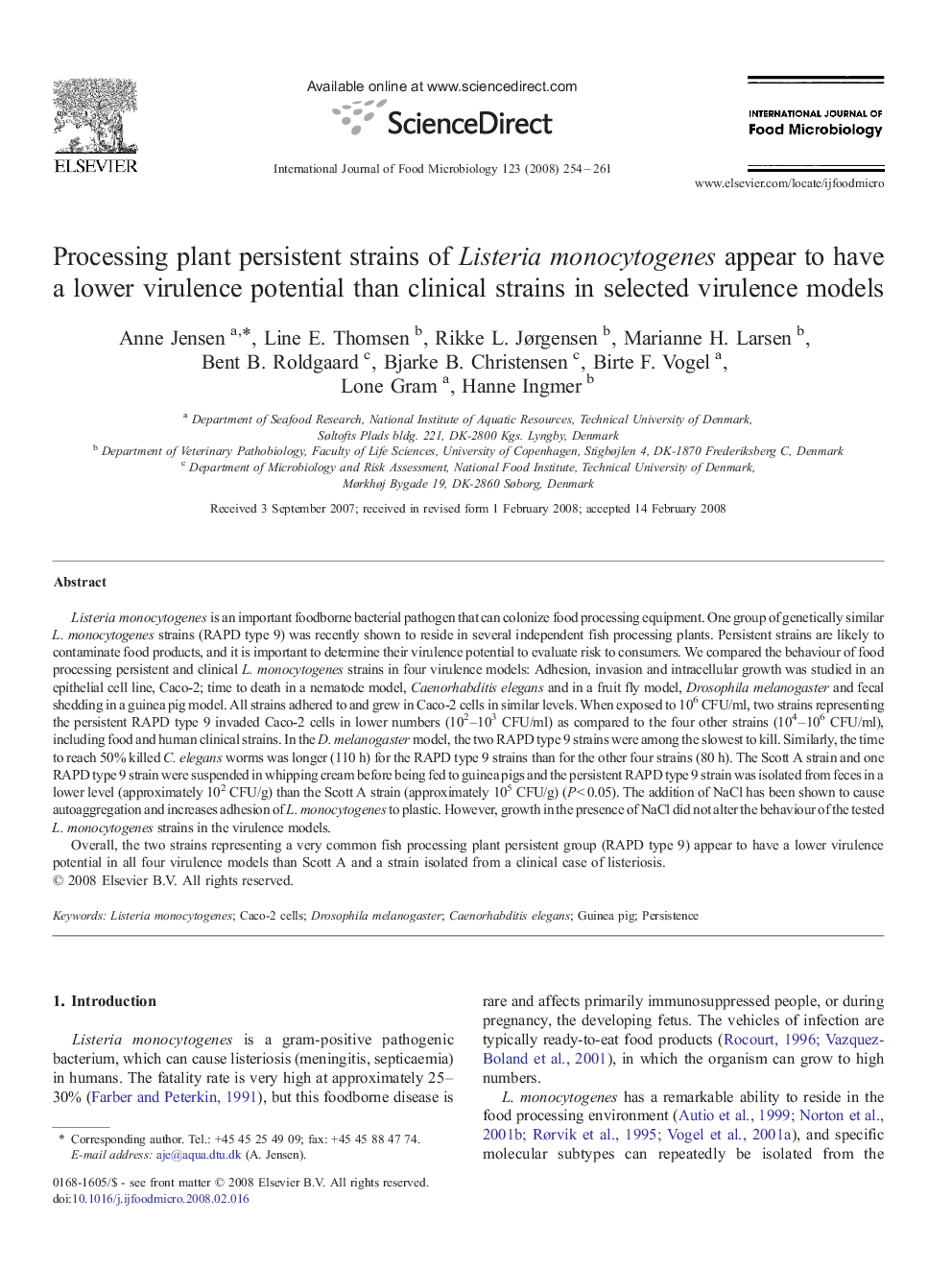| Article ID | Journal | Published Year | Pages | File Type |
|---|---|---|---|---|
| 4369235 | International Journal of Food Microbiology | 2008 | 8 Pages |
Listeria monocytogenes is an important foodborne bacterial pathogen that can colonize food processing equipment. One group of genetically similar L. monocytogenes strains (RAPD type 9) was recently shown to reside in several independent fish processing plants. Persistent strains are likely to contaminate food products, and it is important to determine their virulence potential to evaluate risk to consumers. We compared the behaviour of food processing persistent and clinical L. monocytogenes strains in four virulence models: Adhesion, invasion and intracellular growth was studied in an epithelial cell line, Caco-2; time to death in a nematode model, Caenorhabditis elegans and in a fruit fly model, Drosophila melanogaster and fecal shedding in a guinea pig model. All strains adhered to and grew in Caco-2 cells in similar levels. When exposed to 106 CFU/ml, two strains representing the persistent RAPD type 9 invaded Caco-2 cells in lower numbers (102–103 CFU/ml) as compared to the four other strains (104–106 CFU/ml), including food and human clinical strains. In the D. melanogaster model, the two RAPD type 9 strains were among the slowest to kill. Similarly, the time to reach 50% killed C. elegans worms was longer (110 h) for the RAPD type 9 strains than for the other four strains (80 h). The Scott A strain and one RAPD type 9 strain were suspended in whipping cream before being fed to guinea pigs and the persistent RAPD type 9 strain was isolated from feces in a lower level (approximately 102 CFU/g) than the Scott A strain (approximately 105 CFU/g) (P < 0.05). The addition of NaCl has been shown to cause autoaggregation and increases adhesion of L. monocytogenes to plastic. However, growth in the presence of NaCl did not alter the behaviour of the tested L. monocytogenes strains in the virulence models.Overall, the two strains representing a very common fish processing plant persistent group (RAPD type 9) appear to have a lower virulence potential in all four virulence models than Scott A and a strain isolated from a clinical case of listeriosis.
